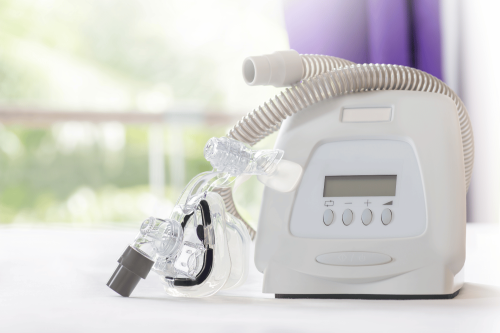
What Is Anaphylactic Shock?
Anaphylactic shock is a type of distributive shock caused by a severe allergic reaction, in which the immune system releases chemicals that trigger widespread inflammation and physiological changes. This condition is characterized by the narrowing of airways and a rapid drop in blood pressure. Unlike neurogenic shock, which impacts nerve function, anaphylactic shock results from hypersensitivity to allergens such as food, insect stings, or medications.
The primary sign is a sudden, significant drop in blood pressure, which can impair oxygen delivery to organs and tissues. This is compounded by airway constriction, swelling, and difficulty breathing, making immediate treatment crucial. The release of immune chemicals also increases vascular permeability, causing fluids to leak from blood vessels and exacerbating low blood pressure. Emergency interventions, such as administering epinephrine, antihistamines, and oxygen, are essential to stabilize the patient and prevent potentially fatal complications.
What Causes Anaphylactic Shock?
Anaphylactic shock is caused by exposure to allergens that trigger an overreaction of the immune system. These common causes of anaphylactic shock are discussed in detail as follows:
Food Allergies
Certain foods are among the most common causes of anaphylactic shock. Shellfish, nuts, eggs, and dairy can trigger severe allergic reactions in sensitive individuals. Trace amounts of these allergens are often enough to cause a life-threatening response. Symptoms typically begin within minutes of ingestion but can sometimes be delayed. Immediate administration of epinephrine is critical in such cases to counteract the reaction and restore normal circulation.
Medication Allergies
Many medications, including antibiotics like penicillin, over-the-counter drugs, and nonsteroidal anti-inflammatory drugs (NSAIDs), can provoke an anaphylactic reaction in susceptible individuals. Careful evaluation of a patient’s medical history and any known medication allergies is crucial to avoid such incidents. If anaphylactic shock occurs, prompt use of epinephrine, oxygen therapy, and antihistamines is vital to stabilize the patient.
Insect Stings
Stings from insects such as bees, wasps, and hornets are another common trigger of anaphylaxis. The venom injected during a sting can elicit a systemic allergic reaction in hypersensitive individuals. Without proper intervention, such as the use of an epinephrine auto-injector and emergency care, the condition can rapidly progress to anaphylactic shock.
Latex Allergies
Latex, found in many medical supplies such as gloves and catheters, is another potential allergen. Repeated exposure increases the risk of developing an allergy, and severe cases can lead to anaphylactic shock. To prevent this, healthcare providers often use non-latex alternatives for patients with known latex sensitivities.
Other Triggers
Other causes include exposure to certain chemicals, physical triggers such as exercise (exercise-induced anaphylaxis), or rare conditions in which no specific allergen is identified (idiopathic anaphylaxis). Each case requires a tailored approach to determine the cause and implement effective prevention and treatment measures.
Anaphylactic shock is a medical emergency and must be treated promptly to prevent serious complications or fatalities. Awareness of common triggers and carrying rescue medications, such as epinephrine, can save lives in acute situations.
Anaphylactic Shock Symptoms to Look Out For
Anaphylactic shock is a critical condition where symptoms emerge rapidly and necessitate immediate action to prevent life-threatening consequences. Identifying the symptoms early can significantly improve outcomes. Here are the key symptoms of anaphylactic shock:
Hypotension
A defining symptom of anaphylactic shock is a sudden drop in blood pressure, or hypotension. This occurs due to the widespread dilation of blood vessels triggered by the body’s allergic response. Patients may experience dangerously low blood pressure levels, leading to dizziness or fainting.
Tachycardia
Tachycardia, or a rapid heart rate, often accompanies anaphylactic shock. The body attempts to compensate for low blood pressure by increasing the heart rate, which can feel like a racing pulse and may be accompanied by chest discomfort.
Skin Reactions
Unlike other types of shock, anaphylactic shock frequently presents with skin reactions such as hives, itching, or flushing. Swelling of the skin, face, or throat (angioedema) is another standard indicator. These skin changes are typically a result of the body’s release of histamine during an allergic reaction.
Respiratory Distress
Breathing difficulties are a hallmark of anaphylactic shock and can include wheezing, shortness of breath, and a tightening sensation in the throat and chest. Swelling in the airways or throat can severely impede airflow, making this an immediate medical emergency.
Gastrointestinal Symptoms
Vomiting, diarrhea, or severe stomach cramps can also occur during anaphylactic shock. These symptoms result from the gastrointestinal system's response to allergic mediators, further increasing the severity of the condition.
Altered Mental Status
Individuals in anaphylactic shock may experience confusion, dizziness, or a loss of consciousness. These symptoms emerge as blood flow to the brain diminishes, signaling the condition's critical nature and the need for urgent attention.
Pale or Cyanotic Skin
During anaphylactic shock, insufficient oxygenation may cause pale or bluish (cyanotic) skin. This is especially apparent in extremities such as the lips or fingertips and is a key indicator of reduced oxygen levels in the blood.
Taking note of these symptoms and acting promptly—such as administering epinephrine and seeking emergency medical care—can save lives. Time is critical when dealing with anaphylactic shock, and recognizing these early signs is essential to effective intervention.
How is anaphylactic shock diagnosed?
Accurate diagnosis of anaphylactic shock involves a thorough clinical assessment. Initially, the doctor takes a detailed history to identify potential triggers, such as allergens, prior reactions, or underlying conditions that may predispose a patient to anaphylaxis. They use a combination of physical examinations and diagnostic tools to determine the severity and cause of the condition.
Clinical Examination
A detailed clinical examination is crucial in diagnosing anaphylactic shock. Healthcare providers assess vital signs, including blood pressure, heart rate, and respiratory rate. They also look for physical signs such as swelling, skin rashes, or breathing difficulties, and evaluate symptoms like wheezing, hives, and gastrointestinal distress.
Allergy Testing
Allergy testing may be recommended to identify specific allergens that triggered the anaphylactic reaction. This may include skin prick tests or blood tests to detect immunoglobulin E (IgE) antibodies, which are associated with allergic responses. Understanding these triggers helps in developing preventive strategies for future incidents.
Blood Tests
Blood tests can provide further insight into the patient’s condition during anaphylaxis. Elevated tryptase levels, a marker released by mast cells, may confirm a severe allergic reaction. Additional tests may be performed to assess organ function and rule out other medical conditions that could mimic anaphylactic shock.
How to Treat Anaphylactic Shock Effectively?
Immediate and appropriate treatment is crucial for managing anaphylactic shock. The therapy focuses on halting the allergic reaction, restoring normal physiological functions, and preventing complications. Here is an overview of the key measures for treating anaphylactic shock:
Administering Epinephrine
Epinephrine is the first-line treatment for anaphylaxis and must be administered immediately. This medication works by constricting blood vessels, relaxing airway muscles, and counteracting the effects of the allergic reaction. It is typically delivered by intramuscular injection into the outer thigh. Delaying epinephrine administration can increase the risk of severe complications or death.
Fluid Resuscitation
Intravenous fluid resuscitation is often required to manage hypotension associated with anaphylactic shock. Administering fluids helps restore circulatory volume and improve blood pressure. Care should be taken to monitor the patient’s response and avoid overhydration, which can lead to additional complications.
Adjunct Medications
Adjunctive medications such as antihistamines and corticosteroids may be used to reduce symptoms such as hives, swelling, or bronchospasm. While not a substitute for epinephrine, these medications provide additional relief and help manage prolonged allergic responses.
Supporting Airway and Breathing
Supportive care is essential, especially if the patient experiences airway obstruction or severe breathing difficulties. Oxygen therapy or, in severe cases, intubation may be needed to maintain adequate oxygenation. Monitoring and securing the airway as early as possible is critical.
Ongoing Monitoring and Follow-Up
Patients must be closely monitored even after initial stabilization, as biphasic anaphylaxis can occur. This involves recurring symptoms several hours after the initial reaction. Follow-up care includes identifying the trigger of the allergic reaction and advising the patient on preventive measures, such as carrying an epinephrine auto-injector and avoiding known allergens.
Effective management of anaphylactic shock depends on prompt intervention and comprehensive post-recovery care, ensuring the patient’s safety and reducing the risk of recurrence.
Anaphylactic Shock vs. Other Types of Shock
Anaphylactic shock is a severe allergic reaction that can be confused with other types of shock, such as septic or neurogenic shock, due to overlapping symptoms like low blood pressure and altered mental status. However, understanding the distinct mechanisms behind these conditions is essential for accurate diagnosis and effective treatment.
Causes of Anaphylactic Shock
An exaggerated immune response to allergens, such as foods, insects, medications, or latex, can trigger anaphylactic shock. This reaction leads to the massive release of histamines and other chemicals, causing widespread vasodilation, increased vascular permeability, and airway constriction.
Differences from Septic and Neurogenic Shock
Unlike anaphylactic shock, septic shock originates from a severe infection that triggers systemic inflammation, while neurogenic shock results from nervous system disruption, often due to spinal cord injury. Septic shock is characterized by infection markers such as fever and an elevated white blood cell count, whereas neurogenic shock features bradycardia and temperature dysregulation.
Management and Treatment
Effective management of anaphylactic shock focuses on the prompt administration of epinephrine to reverse airway constriction and improve blood circulation. Meanwhile, septic shock treatment emphasizes controlling the infection with antibiotics and fluid resuscitation. For neurogenic shock, stabilizing the spine and addressing blood pressure regulation are priorities. Proper differentiation enables tailored therapeutic approaches, ensuring optimal patient outcomes.
By understanding these distinctions, healthcare professionals can deliver precise and effective care, minimizing complications for individuals experiencing any shock.
Long-Term Management of Anaphylactic Shock
Long-term management of anaphylactic shock requires a comprehensive approach tailored to prevent future episodes and improve overall quality of life. Ongoing care focuses on prevention strategies, patient education, and lifestyle adjustments.
Prevention Strategies
Prevention is essential for patients at risk of recurring anaphylactic shock episodes. Identifying and avoiding known allergens is crucial, alongside discussions with healthcare providers about specific triggers. Patients may also benefit from carrying emergency medications, such as an epinephrine auto-injector, for immediate use when needed.
Patient Education
Educating patients and their families about anaphylactic shock and its management is vital for long-term outcomes. Providing clear information on recognizing early symptoms, administering emergency treatment, and seeking prompt medical attention ensures preparedness in critical situations.
Lifestyle Adjustments
Lifestyle adjustments are integral to minimizing risks and enhancing recovery. Patients should consider allergen-proofing their living spaces, adhering to personalized allergen-avoidance plans, and incorporating stress-reduction techniques to support overall health. Consistent communication with healthcare providers further ensures that preventive measures remain effective.
By implementing these strategies, patients can significantly reduce the likelihood of recurrent anaphylactic episodes and improve their overall quality of life.
When to Seek Medical Attention
Anaphylactic shock is a medical emergency. Immediate medical help is crucial to prevent life-threatening complications. Seek urgent assistance if you or someone else experiences any of the following symptoms:
- Difficulty breathing or wheezing
- Swelling of the face, tongue, or throat
- Rapid or weak pulse
- Severe drop in blood pressure
- Loss of consciousness
- Skin reactions such as hives, flushing, or itching
Prompt recognition of these signs and immediate action, such as administering prescribed epinephrine and seeking emergency care, can significantly improve recovery outcomes.
Key Lessons on Anaphylactic Shock for Better Preparedness!
Anaphylactic shock is a life-threatening condition that requires prompt recognition and treatment. Severe allergic reactions, often triggered by foods, insect stings, medications, or latex, are the most common causes of anaphylactic shock. Thus, early intervention is essential to improve recovery outcomes and minimize the risk of severe complications.
As part of your commitment to healthcare excellence, consider taking relevant courses, such as Basic Life Support (BLS) or Advanced Cardiovascular Life Support (ACLS). These training programs can enhance your skills and knowledge, equipping you to manage critical situations such as anaphylactic shock effectively.








 Login with Google
Login with Google Login with Facebook
Login with Facebook